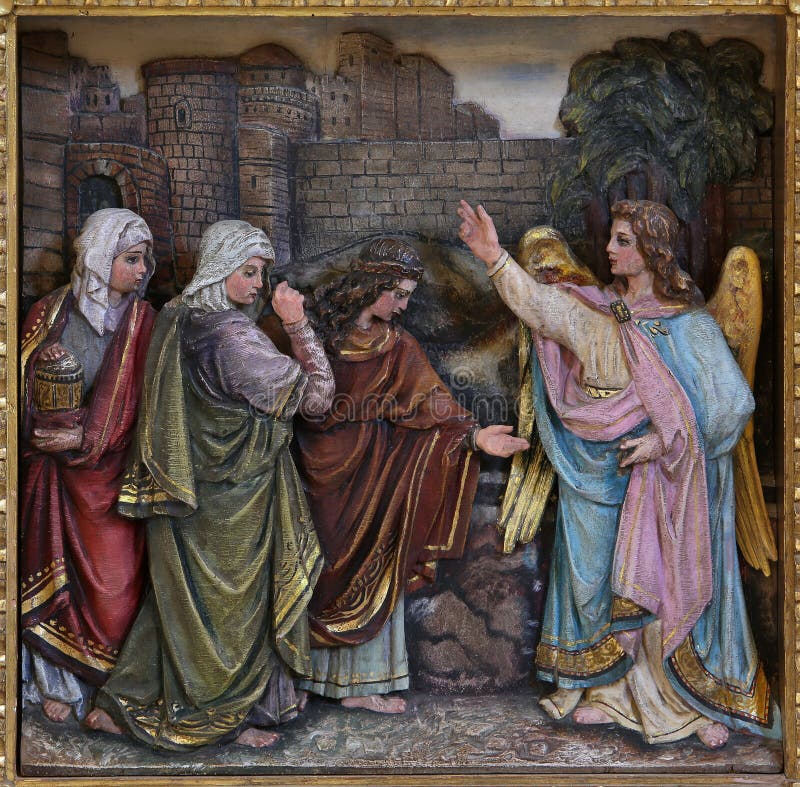Lost in Translation #104
Following the Gloria in excelsis, the priest kisses the altar, turns to the people, and says:
Dóminus vobiscum, or “The Lord be with you.”
To which the people reply:
Et cum spíritu tuo, or “And with thy spirit.”
The exchange serves as a way for the priest to call the attention of the congregation to what is about to happen next. It often follows a part of the Mass in which the ministers and the faithful are involved in two different theaters of action and therefore need a call to return to the same page. In the case of the Gloria in excelsis, even though it is a hymn common to all, the priest recites it in a low voice to himself while the choir (and congregation) sing it at a different pace.
The Dominus vobiscum appears eight times in the Mass, from the Prayers at the Foot of the Altar to the Last Gospel. During four of those times, the priest turns to the congregation when giving the greeting, no doubt as an added way of getting the people’s attention. But there is a mystical significance as well. Thanks to these four turns and the priest’s semicircular turn at the Orate Fratres, the priest turns a total of five times to the people during the Mass. For St. Thomas Aquinas, this repeated action denotes “that Our Lord manifested Himself five times on the Day of His Resurrection” [ST III.83.5.ad 6.]
- “to the women at the sepulcher;
- to the same on the way from the sepulcher;
- to Peter;
- to the two disciples going to the town;
- to several of them in Jerusalem when Thomas was not present.” [ST III.55.3.ob 3.]
If we are to follow this interpretation strictly, the Dominus vobiscum after the Gloria and before the Collect signifies Our Lord’s greeting to the women at the sepulchre.
Mary Magdalene and Women at the Empty Tomb of Jesus
Translation Controversies
In the English-speaking world, most of the controversy in translating the Dominus vobiscum has centered on the response, Et cum spiritu tuo. “And with your spirit” is a Hebraicism, but in the Roman liturgy it is also an allusion to the spirit of holy orders; hence, only a deacon or above can issue the greeting Dominus vobiscum, for only deacons, priests, and bishops have the spirit of [major] holy orders. When the Divine Office is celebrated and the hebdomadary is a layman or minor cleric, the greeting is dropped and replaced with Domine, exaudi oratiónem meam. Et clamor meus ad te véniat (O Lord, hear my prayer. And let my cry come before Thee.)
Perhaps because this greeting acknowledges a difference between clergy and laity, and perhaps because the original ICEL translators of the Mass were influenced by an egalitarian spirit, the translators chose to bury the distinction and translate “and with thy spirit” as “and also with you.” When the 2011 translation finally translated the words accurately, it corrected an unwarranted liberty taken in the 1970s, but it also made obsolete a good Catholic joke, about the time when the celebrant was struggling to begin his homily at the ambo. “There’s something wrong with this mic,” he told the congregation.” To which the people, in good Pavlovian fashion, replied, “And also with you.”
The Implied Verb
Despite this focus on the second verse, it is my contention that the first verse presents a greater challenge to the translator. The words themselves are easy enough: Dominus means “Lord” and vobiscum means “with you” (plural). The challenge lies in the fact that the verb “to be” is not articulated but only implied, and so the verb can be either in the indicative or the subjunctive. In the indicative, the greeting means “The Lord is with you.” In the subjunctive, it means “May the Lord be with you.” It can even mean “The Lord is about to be with you.”
Every translation that I have ever seen uses the subjunctive, and understandably so. Still, we should not lose sight of the ambiguity of the original Latin. If Aquinas is right and every Dominus vobiscum hearkens to the Risen Christ greeting people, then there is a way in which it means “The Lord is with you, come back from the dead.”
Context is also crucial in deciphering which meaning may be in the forefront. For the Dominus vobiscum before the Collect, perhaps the meaning is “May the Lord be with you and help you be present as we collect our thoughts into this important common prayer.”
But during the times of the Mass in which Jesus Christ is made present in a heightened way, the meaning could be “The Lord is about to be with you.” Dominus vobiscum begins the Preface to the Canon, and the Canon, of course, is when Jesus Christ is made truly present on the altar in the form of bread and wine. But Christ is also made present (not in the same way, of course) during the proclamation of the Gospel, for the Gospel reveals the real person of Jesus Christ. Perhaps the Dominus vobiscum that the priest says before the Gospel and the Last Gospel should be interpreted in this light.
And when the priest says Dominus vobiscum before the Postcommunion, could the meaning be, “The Lord is with you, you have just received the Body, Blood, Soul, and Divinity of Jesus Christ within your very bodies and souls”? And when moments later, the priest says Dominus vobiscum before the dismissal, could it not mean “May the Lord be with you as you go out into the world and fulfill your mission to bring Christ to it”? Much can be gleaned from three words and the context in which they appear.



